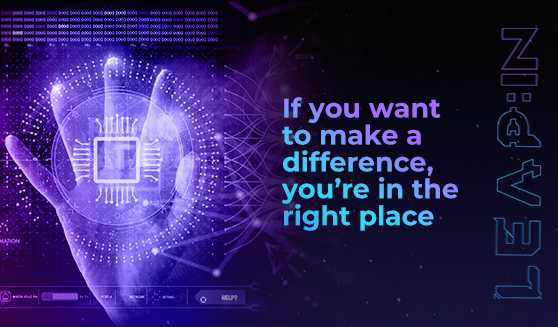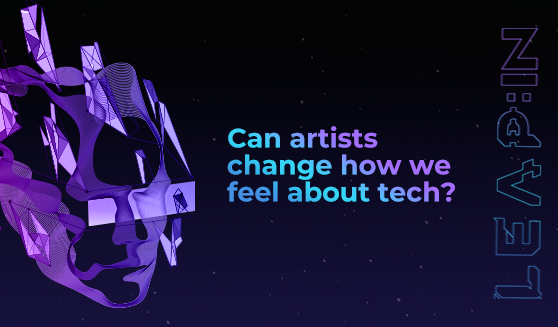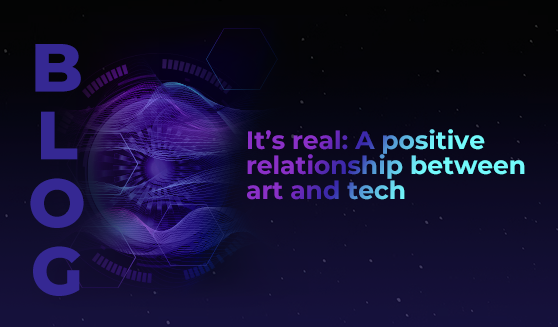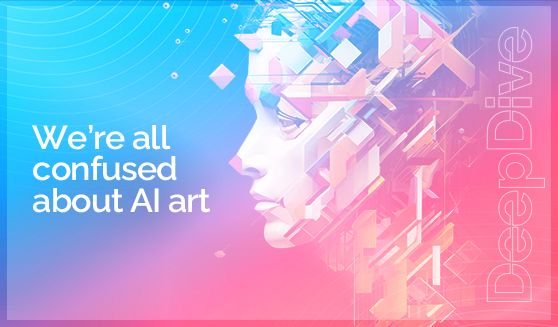
Welcome to this week’s LEAP:IN newsletter. Each week, we unpack leader’s powerful quotes and decipher the tech landscape. With exclusive content from some of the world’s leading experts in AI, robotics, space, edutech, climate tech and more, read on to discover this week’s insights and subscribe to receive weekly updates direct to your inbox.
subscribe
This week we’re quoting…
Julian Pistone (Regional Industry Manager at Google)
What Pistone said:
“We have a duty to step forward and lead when others are hiding at the back of the room. We have a duty to dare when others are playing it safe. We have a duty to disrupt when others are hesitant. And we’ve been called to make a difference. And if we don’t, then we deprive the world of something.”
Stepping forward involves taking a risk
To do what Pistone is asking – to step forward and take the lead when others are hiding at the back of the room – involves risk.
And people need to do this at every level of the tech industry. Users take a risk in order to adopt a new technology; businesses take a risk when they shift operations into a new digital way of working; and innovators need to take risks when they share their ideas with the world, and seek investments to bring their products to the market.
None of it is easy. All of it requires courage.
It’s all worth it though – right?
Right!
Because the risk-takers can build successful companies and change the world.
Like Walt Disney – his first studio, Laugh-O-Gram, went bankrupt in 1923. He took his unfinished Alice in Wonderland footage to Hollywood, and went on to present Mickey Mouse to the world in 1928, after about 300 rejections. We all know what happened after that – the risk Disney took to get his characters seen has influenced global culture right up to the present day.
We’re not saying you should invent cartoon characters, don’t worry. But take that same courageousness and perseverance and apply it to your tech innovations.
Make it happen.
Because the market is big, and growing
Which means there’s space for your risk to pay off.
Some numbers to back that up:
- The tech industry is worth trillions. And a trillion is a lot. By the end of this year, the market’s set to exceed USD $5.2 trillion (source: CompTIA).
- 90% of existing data was generated between 2019 and now (source: CompTIA), so there’s a lot of real-time information out there to capture and leverage.
- 5G networks are expected to cover 40% of the world by 2024 (source: GoRemotely).
- AI is projected to add up to $15.7 trillion to the global economy by 2030 (source: PwC).
- The AR market is expected to grow at a CAGR of 48.6% between 2021-2028, at which point it’ll be worth $97.76 billion (source: Fortune Business Insights).
- The burgeoning metaverse market is predicted to grow to $426.9 billion by 2027, at a CAGR of 47.2% (source: ReportLinker).
None of this makes risk-taking a no-brainer – it’s still hard. Competition is more fierce than ever before, and brilliant ideas fall by the wayside every day.
But if you have an idea that could change lives, protect the environment, and drive positive transformation – remember that the market has everything you need to make it work. Don’t give up.
And…
Felix Wass (CEO and President of DETASAD)
What Wass said:
“We believe everybody in this room has the power to make a difference in terms of technology. To bring us to a progressive view. Obviously technology can drive effectiveness, it can lead to longer and healthier lives; but it also can lead to a thriving arts culture and a new age of exploration.”
Let’s talk about that
You’ll forgive us, we hope, for often focusing on the ways that tech can improve lives in quantifiable ways – transforming economies, mobility, and equality.
Wass mentioned arts culture. And although we do talk about art sometimes (read our blog post about music in space), we think it deserves a bit more attention – not just here at LEAP, but in the tech industry in general.
Why?
Because art is culture. Art is an expression of humanity. And tech must stay connected with humanity if it’s going to serve us into the future.
Also…
We think the way tech is developed is kind of like art.
Think of it like this: people often think of art as something an artist makes because they had an idea for the thing, and then they made it. The product reflects the original idea.
But anthropologist Tim Ingold argues that this isn’t really how art is made at all. In his 2012 book Making, he wrote that the idea of art as the product of an idea “leaves out the very creativity of the processes where both things and ideas are generated. They (the new objects and artefacts) are generated on one hand in the flows and transformations of materials and on the other hand in the movement of the imagination and the sensory awareness of the maker.”
In other words, ideas arise through the process of making the thing.
And in tech, ideas also come up through the process of creating something, testing it, modifying it, and interacting with the industry and with users. Inventing technology is a creative process.
Plus, technology is changing art
Now, new tech is changing the way we make, experience, and buy/sell art. And these changes have been sped up by the pandemic – artists had to find new ways to work and collaborate.
- In October 2018 the famous art auction house Christie’s sold its first AI-generated art piece for $432,500. It’s a digital painting called Portrait of Edmond Belamy, produced by generative adversarial networks (GANs).
- Then in 2021, Christie’s sold $150 million in NFTs. One of those NFTs, by the artist Beeple, sold for a record $69 million.
- Artists Julian Adenauer and Michael Haas are using robots to make art. They created a robot that moves around on a canvas, leaving a trail of colour behind it. Installed on a wall in the Berlin Gallery since 2014, the artwork changes each day as the robot continues to move. The idea, Haas told Smithsonian, is that “the process of creation is ideally endless.”
- Google has created a tool called the Tilt Brush. It uses VR to enable artists to immerse themselves in a 3D impression of their work, and view it from every angle. They can paint objects floating in the air – gravity is no object.
This list could get very, very long. There are a vast number of technological tools for art, and loads of examples of technology disrupting the structures and hierarchies of the art world. Are you developing art-based tech? Maybe you’d like to share it at #LEAP23.
subscribe








